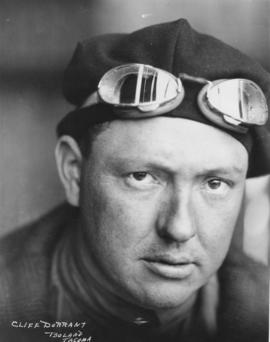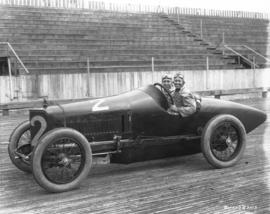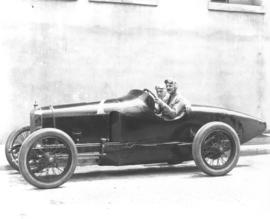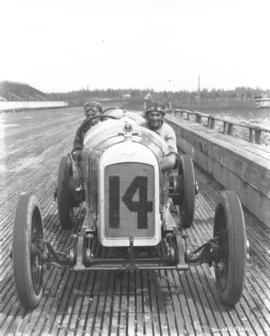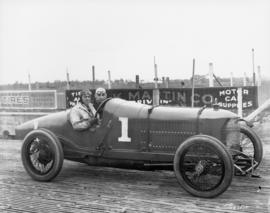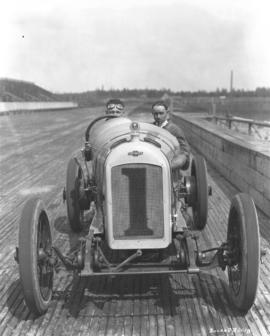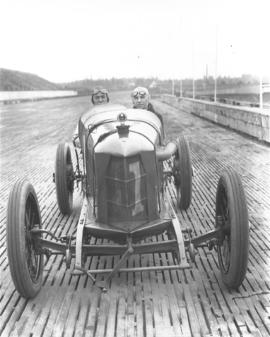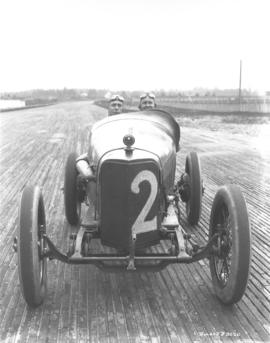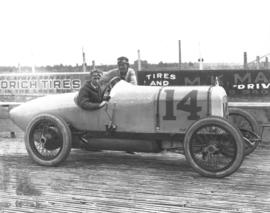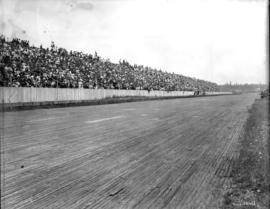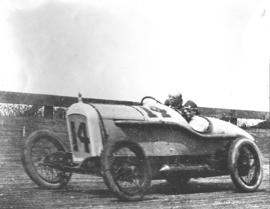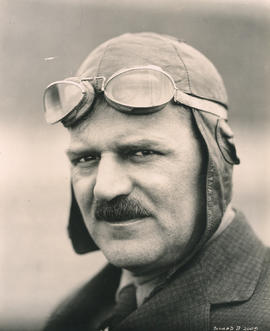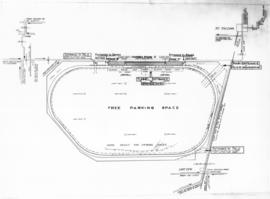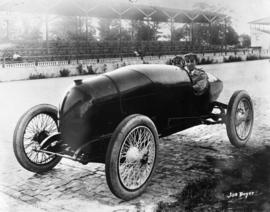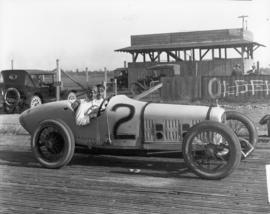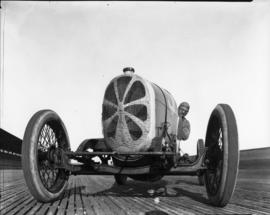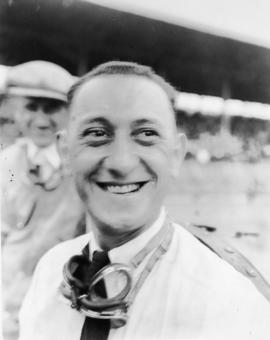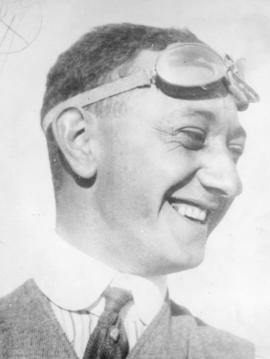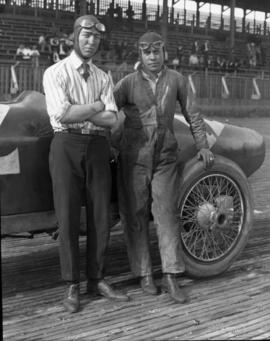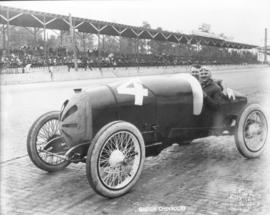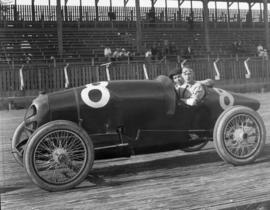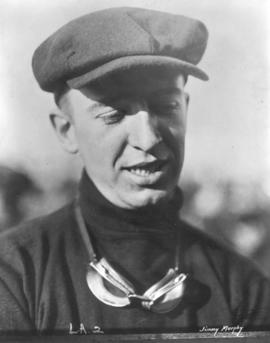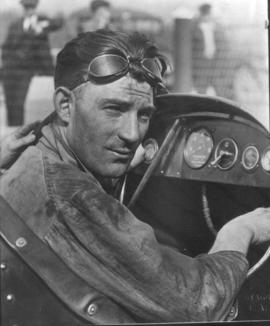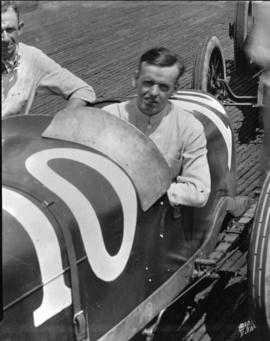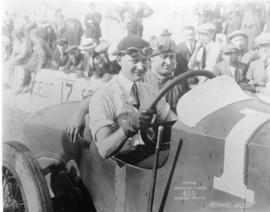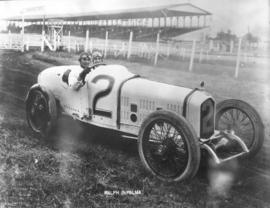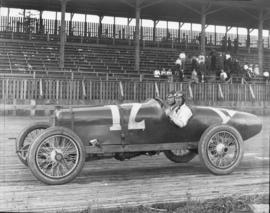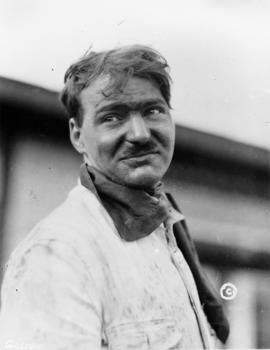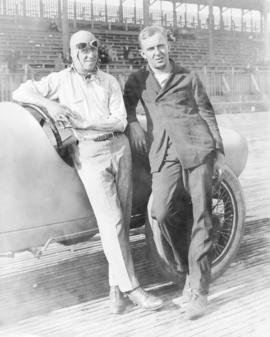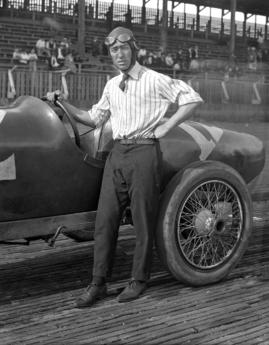- Item
- 1919-07
Part of Marvin Boland Photographs
Informal portrait of race car driver, Cliff Durant. Mr. Durant was back in Tacoma during the special July 4th races at the Tacoma Speedway in 1919. He joined racing colleagues and fellow aces Louis Chevrolet, Ralph Mulford, Eddie Hearne and Dario Resta for a one-day-only three race series with a total purse of $15,000. Although his Chevy Special No. 1 practiced at speeds up to 118 mph, he came in third in qualifying at 102.56 mph with the Frontenac team of "Grandpa" Louis Chevrolet and Ralph Mulford in first and second. The Frontenacs would sweep all three races but Mr. Durant did stay on the course throughout the day and won $2000. He came in second in the 40-mile, fourth in the 60-mile and third in the 80-mile race. Mr. Durant, a California millionaire and automobile manufacturer, had designed the "Durant Special" now owned and driven by Eddie Hearne in the Tacoma Speedway races. Mr. Hearne also did well in the races with total winnings of $2100 and second place honors in the 80-mile race. (TNT 7-3-19, p. 1, 2-article; 7-5-19, p. 1, 13-results) G52.1-032
Durant, Cliff; Automobile racing--Lakewood--1910-1920; Automobile racing drivers; Tacoma Speedway (Lakewood);
